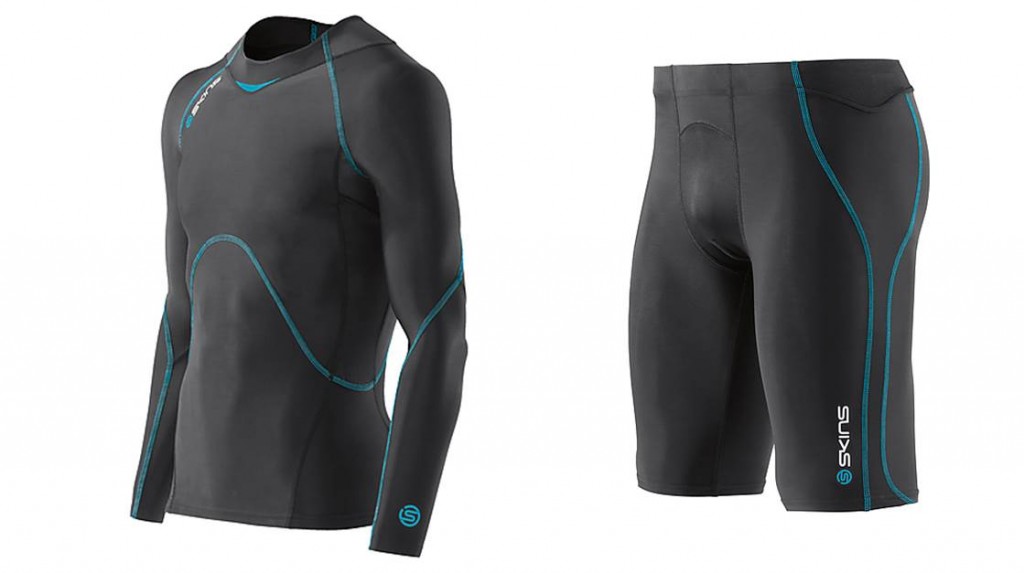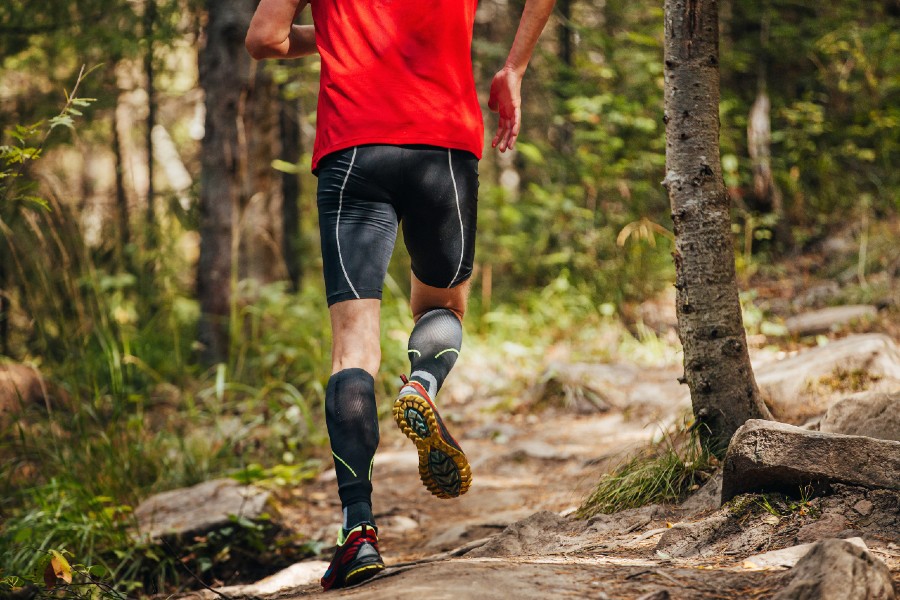Muscle recovery is a concern whether you’re a professional athlete or a weekend fitness junkie. Compression garments are used for a recovery boost and to help avoid muscle aches after workouts so you can return to training faster. Compression garments provide comfort, support, and various benefits when exercising, and range from sleeves to complete body outfits. The compression sleeves are commonly worn on the arms or legs. Let’s look at compression garments and how these can help you when exercising.
What do compression garments do to your body?
Compression garments are tight-fitting elasticised fabric bands that offer compression. Simply put, compression helps to increase blood pressure and improve circulation. In sportswear, these garments are thought to increase performance and speed up muscle recovery.
Compression garments offer several benefits to the body.
- Compression garments offer support and stabilise parts of your body when you train. Pressure is added to the muscles and supports some of the strain. They also help with blood circulation, which supports the recovery process while you are training.
- These garments are made with a breathable material so that users stay cool as they train.
- Muscle soreness is reduced or even eliminated when wearing them during and after exercise.
- The recovery process is sped up as the compression garments are constantly sending oxygenated blood to the specific parts of the body you are working. This helps reduce muscle fatigue.
- Compression items are comfortable to wear, they don’t hinder flexibility, they reduce friction, and they stay in place no matter the exercise you’re undertaking.
Compression garments sit snugly against the body and offer several benefits during and after exercising. The idea is that they help speed up muscle recovery so you can get back to training much quicker.
How does compression clothing speed up recovery?

Research shows that compression garments support the recovery process from exercise. Blood flow is improved from wearing compression items as the vessels are compressed, and the blood is pumped efficiently. Blood circulation is improved, which helps with muscle recovery.
Muscle fatigue is also reduced with compression items. Muscle fatigue is when the force of the muscle that can contract is reduced, which results in lower strength performance. Easing fatigue means that the muscle can recover better. You can push harder in the next workout. Research also shows that compression wear can reduce muscle soreness.
But how do they help you to recover?
Compression Reduces Lactic Acid
When we exercise, oxygen and nutrients are depleted from our blood, which results in the creation of lactate that is turned into energy. However, unused lactate is collected in the extremities, which causes muscle soreness.
Compression garments help your body move depleted blood back to the heart, preventing lactic acid from building in the extremities. This creates improved circulation and a reduced recovery time.
Reduces Vibrations
Vibrations can shoot through your muscles when running or jumping. This is a micro-trauma to your muscles, which can lead to tired and sore muscles. Compression wear keeps muscles in place, reducing the vibrations.
Regulate Body Temperature
Cramps can occur when exercising in extreme heat, and muscles can stiffen in cold weather. When muscles change from hot to cold or vice versa, they can become slower to recover. You can regulate your body temperature with compression clothing.
No More Blisters
A blister is an irritation that can take days to recover from. Compression socks reduce friction and help to eliminate blisters with their padding and fit.

How often should you wear compression garments during training?
Wearing compression garments whilst exercising increases the blood flow to that limb, feeds your muscles, and filters out lactic acid. The most optimal time to wear compression garments is during and after training.
Compression clothing transports oxygen-rich blood to the muscles when training and reduces vibrations. During recovery, compression helps to decrease swelling and inflammation. It also helps flush out the lactic acid, promoting a faster recovery period. It has been shown that recovery compression works best within 1 hour of exercising and when worn overnight.
What sort of compression clothing should you wear for different types of training?
You can find compression garments for your whole body, and these can be used in different scenarios depending on your training or workout.
Compression garments include:
- Sleeves
- Socks
- Pants or Leggings
- Shirts or tops
Compression Sleeves
Compression sleeves take the pressure off muscles. These can be used in any sport that requires the upper body, like basketball, running, golf, football, weightlifting, etc.
You may have seen upper arm-to-hand sleeves. These encourage blood flow to the arm and are often worn by tennis players. Golfers often wear compression gloves as they support the wrist. An elbow sleeve protects your arm from injury and is often worn in sports like rugby.
There are sleeves for your legs, including calf, knee, and ankle compressions. Runners often use these when added support is needed for the muscles.
You can combine lower and upper body compression sleeves. This is ideal for sports that use your whole body, like basketball or football.
Compression Socks
Compression socks can help increase blood circulation and relieve muscle pain and pains in the foot, ankle, and shin. Commonly compression socks are worn by runners, athletes, and those training for a marathon.
Compression Pants or Leggings
Compression pants or leggings can help to increase the amount of blood that flows back to the heart from the legs. When you’re engaging in activities like cycling or running, they can help to give your muscles a boost.
Compression Shirts or Tops
As with other compression items, compression shirts help to regulate body temperature, improve blood flow and combat muscle fatigue. Compression shirts can be worn for any workout where the upper body and core are engaged, like weightlifting.
Compression garments can be worn during and after a workout. During a workout, they support and protect the muscles and increase the blood flow to the muscles. After a workout, compression garments promote a faster recovery time so that you can get back to training faster.
There are different compression garments that you can wear, depending on the type of exercise or workout that you will be doing. These offer the support your muscles need for a better workout overall.


Finding The Right Sports Bra For Bigger Boobs
Anecdotally, we know that women often use their breasts as a barrier to activity, or as a reason to avoid doing certain activities or drills. However, this was demonstrated more scientifically during a study in the UK, which found that a whopping 17 per cent of women opted out of an activity due to their

Can Sauna Therapy Help With Anxiety and Depression?
Millions of people deal with mental health issues like depression and anxiety every day. Many of them look for different ways to relieve stress, whether it’s from work or just feeling overwhelmed all the time. Among these, sauna therapy is becoming more popular due to the positive effects it may have on mental health. In

A Pilates and Recovery Franchise Opportunity For Investors
As demand for recovery modalities continue to rise and the popularity of Pilates keeps growing, entrepreneur David Altamura saw a gap in the health and wellness landscape. His successful studio, Wildsoul Wellness, is now available for franchising and opens up a real opportunity for potential investors and business owners to step into the Pilates and

TotalFusion Chermside Announces Exciting Expansion Plans
The team at What’s New in Fitness first visited TotalFusion Chermside back in 2018, when it was Australia’s newest studio concept – a heat-controlled, premium health and fitness facility built on the ethos of ‘movement as a way of life’ and a completely holistic offering that nurtures the mind and the body. The business has
The Most Popular Fitness Tracking Apps of 2024
Almost everyone at some point has used a fitness tracking app or similar to track their health, calories, BMI, workouts and more. We’ve all had those motivated moments to change our life around at 2am at night. If you’ve decided to keep track of your fitness, we have a list of great fitness tracking apps
